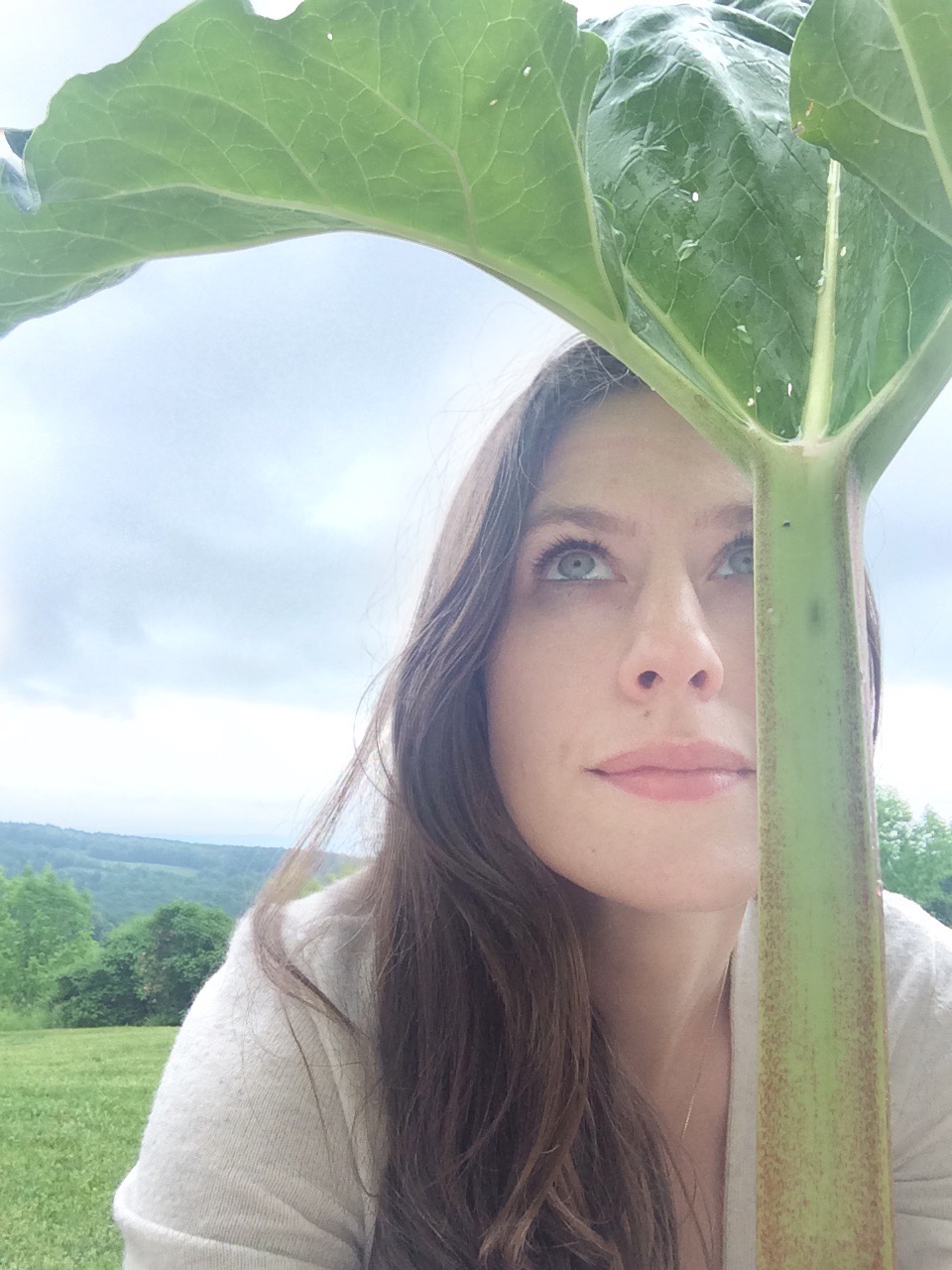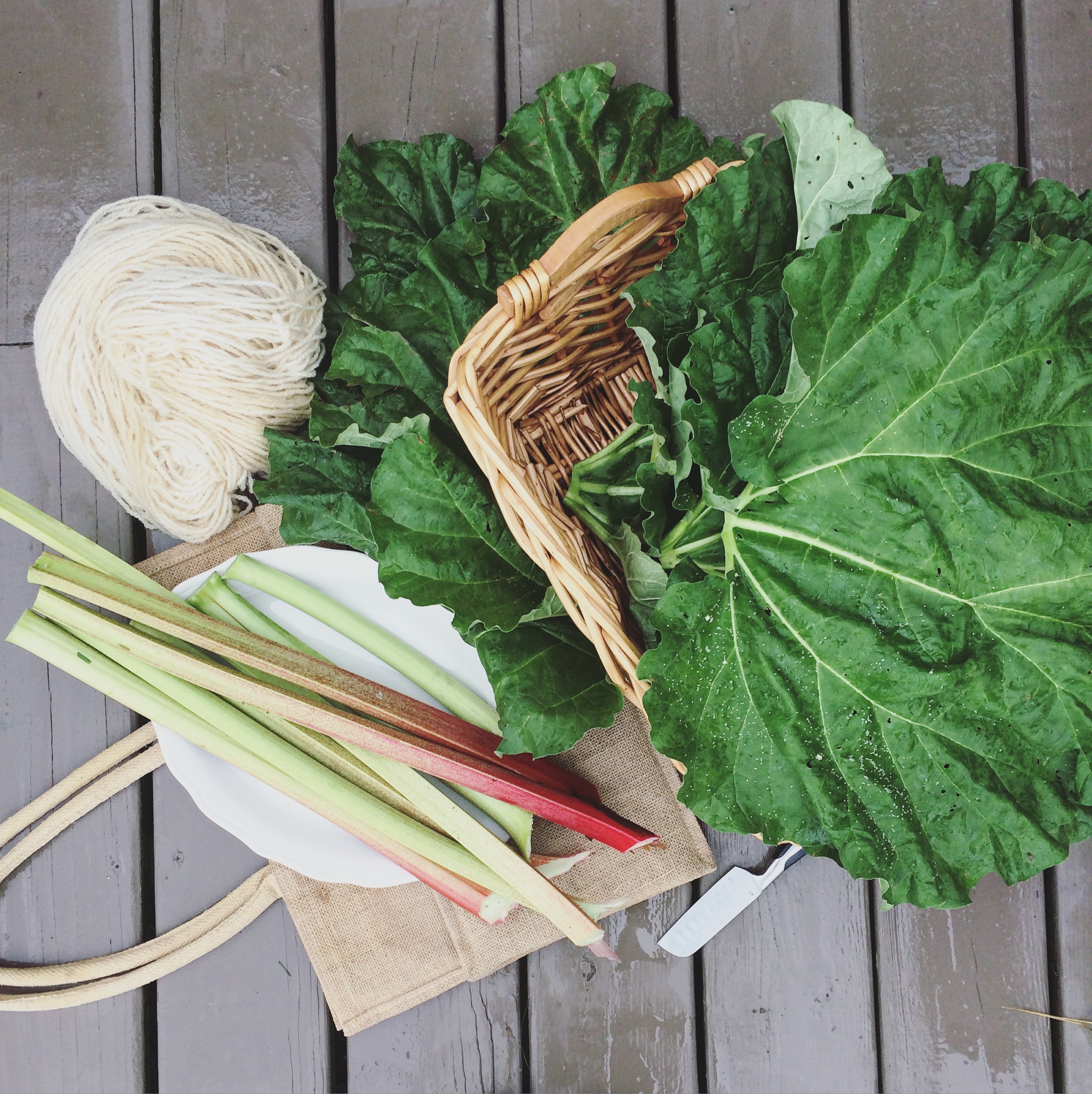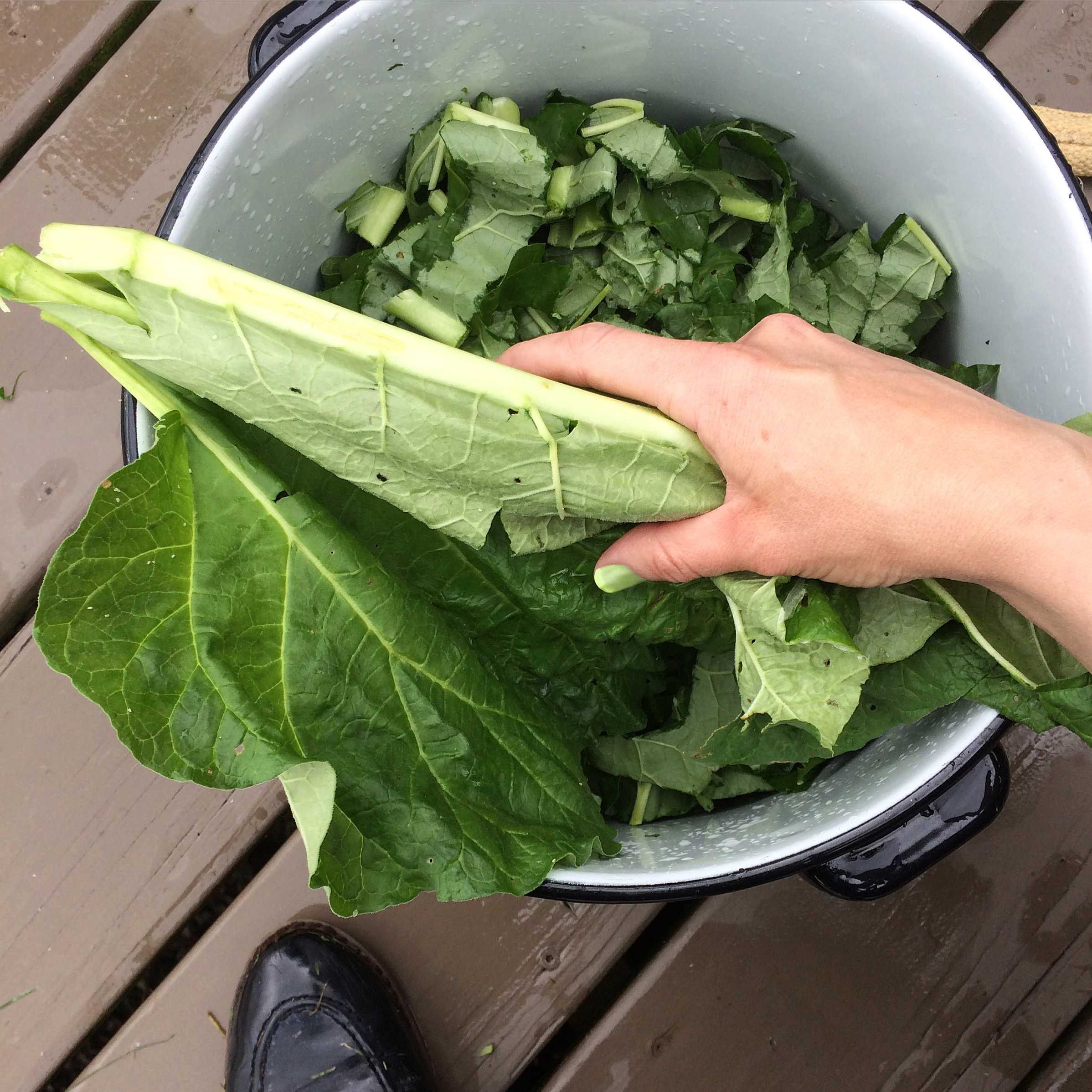
I love rhubarb. Love it. Rhubarb pie, crisp, cobbler. I love it in mixed drinks, jams, ice cream…mmm…It’s a plant that scared the ba-zillies out of me as a kid. I had no idea why I would want to eat something that looked like giant celery for dessert. My dad would say, “Mame, you don’t know what you’re missing.” It wasn’t until I left home for my first job in MA, coming home for the summers that I finally tried it and promptly packed my bags with it. Good Lord I hate admitting he’s right! I mean, really? 20+ years later and I finally tried rhubarb? When I moved to NYC and wasn’t able to make it home at Harvest time, I actually spent a small fortune outside of the growing season to have rhubarb shipped to me in dry ice. Did I mention how much I love it?
Okay, so now you can surmise I’m talking about the taste, but this genius plant inspired one of my favorite products, Bar Keepers Friend. The chemist behind this wonderful cleaner found his pots came out sparklingly clean after cooking with rhubarb – no tarnish. Digging deeper, the chemical found in this plant, Oxalic Acid is a mordant used for fiber dyeing.
Please note, rhubarb leaves are something to be very careful with, particularly the fumes.
It is toxic, considered a poison. I think it is always important to note with natural dyeing, just because it is of nature, does not mean that it is safe. With anything, thoroughly research a plant matter first before lighting that stove. Gloves, masks and tongs should be in your arsenal of tools and used at any point you just aren’t sure (better to research first though). You should not breathe in the fumes, tempting as it is because the smell is great. Work in a well ventilated area or outdoors is always preferred.
Now that we’re square on the precautions…right? The leaves though are a dyer’s best friend. For blues, Oxalic Acid should sit for about a month to really get a cure and can then be used, otherwise you will get a muddy brown as the substance is not mature yet. From what I understand it takes the yellow out of greens and leaves blue. It makes sense, as I’ve found while using this as afterbath on yellows to experiment. It almost entirely stripped the color leaving a dull hum of a color. Not awesome for me as I hate double-work even in doing things I love, but I was able to understand exactly what it does on a practical level. It is a bleaching agent for flax (of which I have not tried…yet!).
My plan in cooking this up was prepping for a dyeing camp I plan to do later this summer. This is great for plant based materials which often need a lot more coaxing than protein fibers like wool and alpaca. I have some antique handkerchiefs, some of my Great-Grandmother’s which are embroidered and some I picked up at Brimfield Antiques Fair in Brimfield, MA years and years ago. (If you live in the Northeast or plan to visit, save the dates for the first week of the months in May, July, September and get on over there. Not to be missed.)
In order to get a good “bite” between fiber to dyestuff you need a mordant. Mordant translates as “bite”. You can dye without it but it will not be wash or light fast (meaning it will wash out or fade very easily). Oxalic Acid is just the stuff for cottons and often used as a boost as a dye modifier.

As you can see in the first image, these leaves are enormous. Our childhood dog, Lorenzo (RIP little bud) used to sleep underneath them. He was a medium sized terrier and rhubarb always reminds me of him. My dad built him a doghouse but for whatever reason he loved the shade of the rhubarb. Smart guy.
HOW TO MAKE

8 medium–large leaves
1 gallon water (I used captured rainwater)
Potato Masher if you have one. I mash dyestuff often to help break down plant matter.
Simmer 1 hour, strain, keep in a container.
* This is great and ideal for cellulose (plant based fibers such as cotton, hemp, flax).
* A boost for reds, blues, purples.
Get busy livin’ and get busy dyein’.


